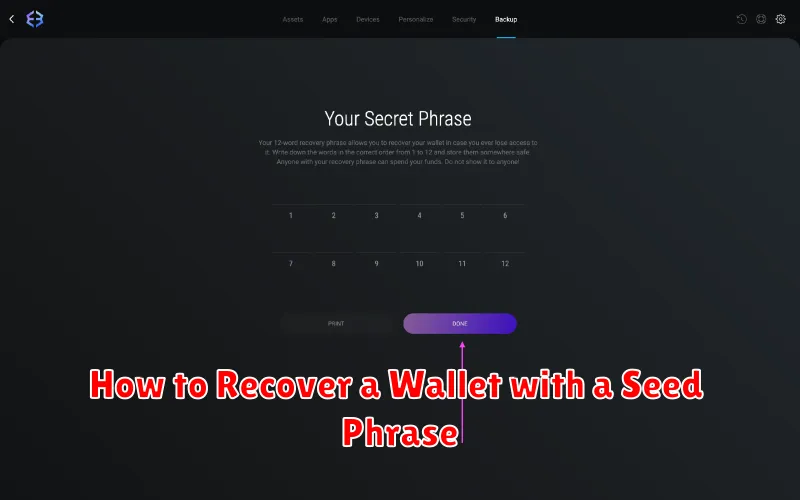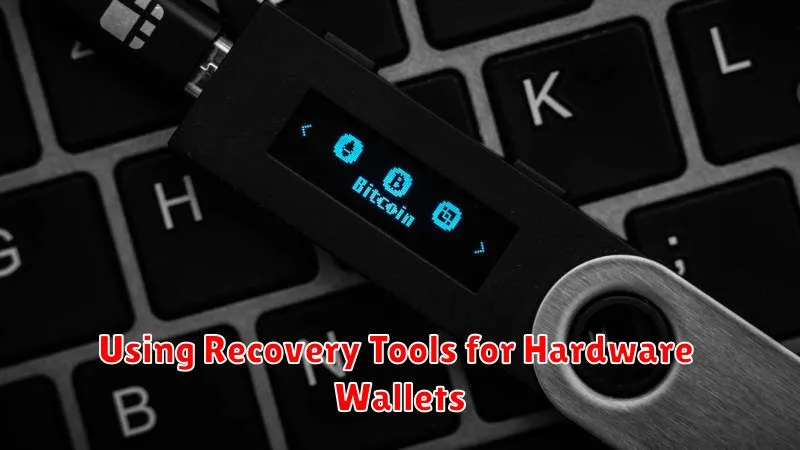Have you lost access to your crypto wallet? Recovering your lost cryptocurrency can be a daunting task, but it’s not impossible. This comprehensive guide will walk you through the steps to regain access to your digital assets, covering various scenarios including forgotten passwords, lost recovery phrases (seed phrases), compromised devices, and more. Learn how to recover your Bitcoin, Ethereum, or other cryptocurrencies, and protect your investments from future loss. We’ll explore wallet recovery methods for popular crypto wallets and offer crucial advice on security best practices to prevent this from happening again. This guide offers practical solutions to help you recover your lost crypto and regain control of your funds.
Common Reasons for Losing Wallet Access

Losing access to your cryptocurrency wallet can be a devastating experience. Several common factors contribute to this problem. One of the most frequent causes is forgetting your password or seed phrase. These are crucial for accessing your funds, and losing them renders your wallet unusable.
Another significant reason is hardware failure. If your hardware wallet malfunctions or is damaged, you may lose access to your cryptocurrency. This can be due to physical damage, software glitches, or even battery failure.
Compromised security is also a major concern. Phishing scams, malware infections, or simply using insecure platforms can grant unauthorized access to your wallet and lead to its compromise and loss of control.
Finally, human error can play a significant role. This includes accidentally deleting your wallet files, writing down your seed phrase incorrectly, or losing the physical device storing your seed phrase.
How to Recover a Wallet with a Seed Phrase

Recovering your cryptocurrency wallet using your seed phrase is the primary method for regaining access. Your seed phrase is a series of words that acts as a key to your wallet. It’s crucial to keep this phrase safe and secure, as anyone with access to it can control your funds.
To recover your wallet, you’ll need to use the seed phrase with the specific software or hardware wallet that originally generated it. Most wallets have a “recover wallet” or “import wallet” option. This usually involves inputting your seed phrase into the designated fields within the wallet software.
Important Considerations: Ensure you’re using the correct software or hardware wallet associated with your seed phrase. Double-check each word carefully when entering your seed phrase, as even one incorrect word will prevent access. Consider using a hardware wallet for future crypto storage as they provide an enhanced layer of security.
If you are experiencing difficulties recovering your wallet, refer to the official documentation of your chosen wallet provider. Their support team can often provide further guidance and assistance.
What to Do If You Forgot Your Password

Forgetting your cryptocurrency wallet password is a serious issue, but there are steps you can take to recover access. The first and most important step is to remain calm and avoid panic. Rushing could lead to irreversible mistakes.
Check your recovery options: Many wallets offer methods of password recovery, such as seed phrases (a list of words), private keys (a long string of characters), or email/phone number recovery. Consult your wallet’s specific instructions or help section to determine the recovery method available to you. If you used a password manager, check there as well.
Review your security practices: Did you write down your seed phrase or private key? Was it stored securely? If so, locate it carefully. If you did not write it down, recovery may be significantly more difficult, or impossible.
Contact your wallet provider: If self-recovery options fail, contact the customer support of your wallet provider immediately. They might have procedures to verify your identity and assist with password reset.
Understand the limitations: Remember that some wallet providers have limitations on the level of support they can offer. Some wallets cannot be recovered if you’ve lost your seed phrase or private key. The more information you have, the better your chances of recovering access.
Learn from this experience: Implement strong password management practices moving forward. This includes creating strong, unique passwords, utilizing a password manager, and securely storing your recovery information in multiple, protected locations (ideally offline and in a fireproof safe).
Using Recovery Tools for Hardware Wallets

Hardware wallets offer robust security, but losing access can be a significant concern. Fortunately, most reputable hardware wallets provide recovery tools to regain control. These tools typically involve a seed phrase, a series of words that act as a backup key. This phrase is crucial; without it, recovery might be impossible.
The specific recovery process varies depending on the hardware wallet brand (e.g., Ledger, Trezor). Consult your wallet’s official documentation for detailed instructions. Generally, you’ll need to enter your seed phrase into the wallet’s software or a compatible recovery tool to restore access to your cryptocurrency.
Caution: Treat your seed phrase with utmost confidentiality. Never share it with anyone, and store it securely offline. Compromising your seed phrase means losing access to your funds.
Some hardware wallets also offer features such as recovery kits or alternative recovery methods. Explore these options if your primary recovery method (seed phrase) is unavailable. Always prioritize official channels and verified software to avoid scams and malware.
Best Practices to Prevent Future Losses

Losing access to your crypto wallet is a significant setback. To prevent future occurrences, adopt robust security measures. Employ strong, unique passwords for each platform and consider using a password manager to securely store them.
Enable two-factor authentication (2FA) wherever possible. This adds an extra layer of security, making unauthorized access significantly more difficult. Regularly update your device’s software and ensure you’re using reputable antivirus software.
Store your seed phrase securely offline, in a physically safe and private location. Never share it with anyone, and consider using a hardware wallet for enhanced security, particularly for larger holdings. Regularly back up your wallet and keep multiple copies in different secure locations.
Be cautious of phishing scams and malicious websites. Only interact with verified platforms and double-check URLs before entering sensitive information. Educate yourself on crypto security best practices and stay updated on the latest threats.
Finally, diversify your crypto holdings across multiple wallets and exchanges to mitigate potential losses from a single point of failure. This minimizes the impact should you lose access to one specific wallet.

